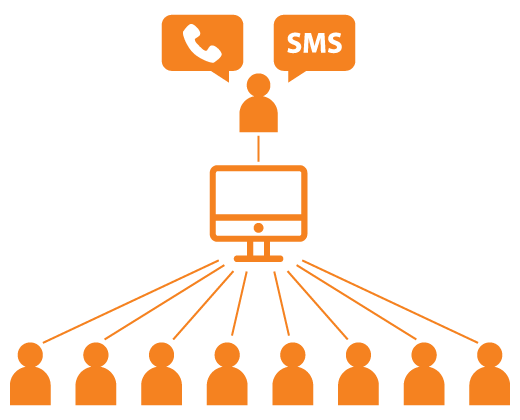Call Tree Templates

Communications in emergencies are only effective if they are executed properly. When determining your call tree templates there are 3 key components to consider:
- Initiation protocols – who has the authority to initiate a call tree activation
- Content – Communications should have a clear call to action, even if it is to wait for further instructions. “Waiting” counts as an action
- “Branch” failure protocols – how do you manage communication failures to ensure the message is delivered to employees further down the chain from the point of failure
Top companies are using https://callertree.com, to conduct their call tree drills easily. Contact us at callertree@gmail.com to get started for free!
Initiation
Within your call tree plan, you should clearly state under what conditions a call tree may be activated and who has the authority to do so. An example could be:
Content
Emergency communications content should be simple and to the point with a clear call to action. A good practice is to create a list of pre-approved messages that could be used to fit a variety of circumstances. A standard call script should look something like this:
Hello, this is (insert name) from (insert company). We have activated a call tree to provide employees with a critical update. (the company) experienced (xyz) and has (insert action here…closed, engaging with emergency responders, etc).
What we need you to do is (insert call to action here)
Example calls to action:
- If part of the “trunk” of the call tree, you need to contact the employees assigned to you to pass the communication onto.
- Wait for further instructions
- Email your manager your status for accountability
- Report to our backup office/secondary site tomorrow
- Work from home until further notice
Branch failure protocols
You need to provide members of the call tree making the calls or “trunks” with instructions on what to do if they cannot reach the team members on their call list. It could be:
- Leave a message
- Send a text message
- Try again in 1 hour
- If you cannot contact another calling or “branch” member, who should make their calls for them?
The success, failure, and status of each contact should be documented by those making the call.
For example:
Whether this is tracked electronically or on paper is the prerogative of your organization. However, considering the proliferation of cyber threats, it is a good idea for each member of the calling team to always have a physical copy of the call tree available to them including at home.
BONUS:
As contacts are made “down” the tree, status and results should be sent back “up” the tree to top leadership reporting on the success or failures of the contacts. A good rule of thumb is that calling members should report up to their next level of management the count for successful and failed contacts.